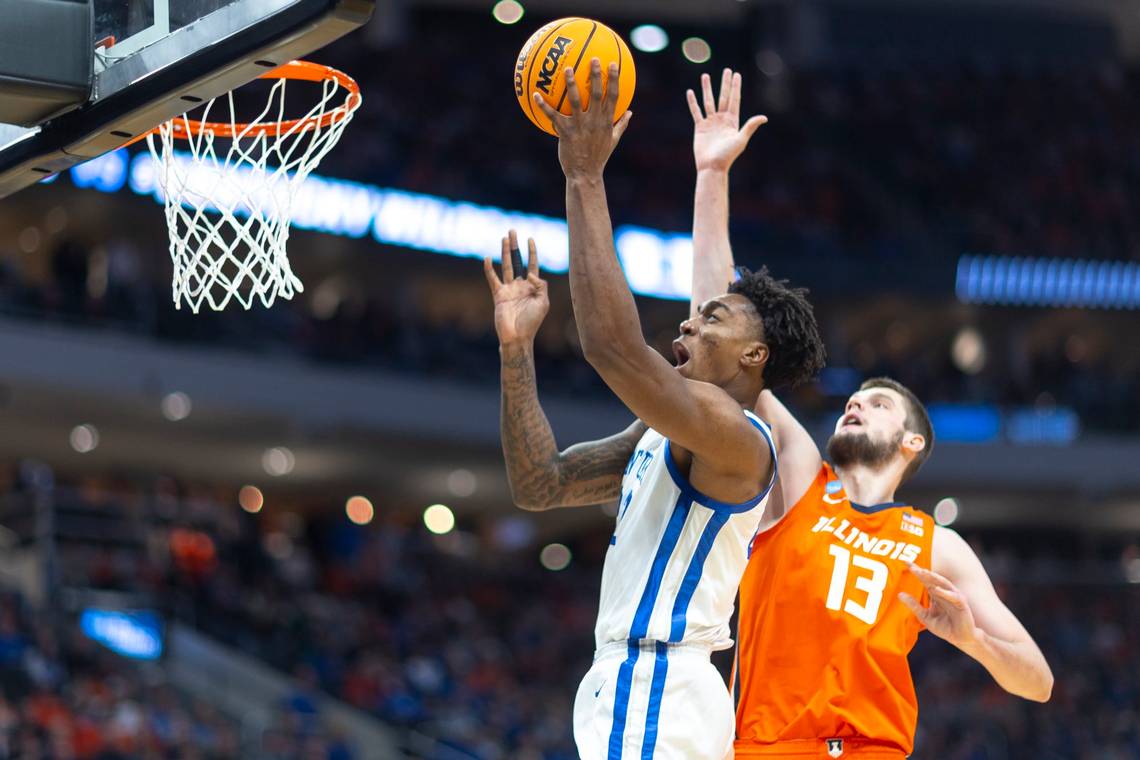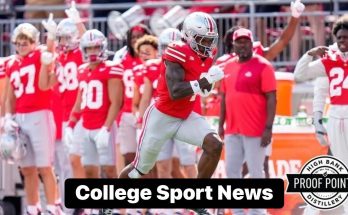Why is Amari Williams not dunking the ball more often? Finishing at the rim is explained by the UK center.
Introduction
Amari Williams, the standout center for the Kentucky Wildcats, has been a force in college basketball with his defensive prowess, rebounding ability, and playmaking skills. However, one noticeable aspect of his game that has raised questions among fans and analysts is his tendency not to dunk as frequently as expected for a player of his size and athleticism.
This article explores the various factors influencing his finishing style, examining the role of Kentucky’s system, his personal skill set, physical considerations, and potential improvements that could elevate his game.
The Role of Amari Williams in Kentucky’s System
Kentucky’s offensive strategy under head coach Mark Pope is built around versatility and ball movement. Unlike traditional centers who camp in the paint, Williams is often asked to initiate plays, handle the ball in transition, and facilitate for teammates. This role naturally pulls him away from the basket, limiting his dunking opportunities.
Coach Pope has emphasized Williams’ unique skill set:
“Amari is a gifted defensive player who can switch onto any position, one through five… Offensively, he is dangerous at the rim, and he’s one of the special passers in college basketball.”
Williams’ role as a playmaker means he spends more time setting up teammates than looking for his own shot, leading to fewer dunks and more assists.
The Versatility of Amari Williams: A Strength and a Limitation
Williams is not your typical back-to-the-basket center. Standing at 6-foot-11 with solid mobility, he thrives in transition and in facilitating offense. His passing ability is one of his greatest strengths, often making him look for cutters or open shooters rather than forcing contested shots at the rim.
Koby Brea, a teammate, highlighted this aspect of his game:
“That man is special. He opens it up like crazy for us because it’s not often that you have a seven-foot dude that is able to bring down the ball for rebounds and find the open man every time.”
While this makes him a unique and valuable asset to Kentucky, it also means he doesn’t always position himself for high-percentage dunk attempts.
Physical Considerations and Injury Concerns
One possible reason for Williams’ reluctance to dunk frequently is the wear and tear on his body. Dunking is an explosive move that requires significant energy and often results in hard landings. Williams has had minor injuries, including a back issue earlier in the season, which may have influenced his approach to finishing at the rim.
In a game against Troy, despite playing through discomfort, he grabbed 13 rebounds and dished out four assists but had limited scoring. This suggests that he sometimes prioritizes defensive and playmaking duties over aggressive scoring.
Kentucky’s Offensive Spacing and Williams’ Role
Another factor that affects Williams’ dunking frequency is Kentucky’s offensive spacing. The Wildcats often play with multiple perimeter-oriented players, spacing the floor for driving guards. In such a system, Williams is frequently stationed near the free-throw line or in the high post, away from traditional dunking spots.
Unlike teams that heavily utilize lob plays for their centers, Kentucky relies more on driving and kicking, which limits alley-oop opportunities for Williams. This style of play encourages layups, floaters, and passing rather than constant rim-rattling dunks.
Ball Security and Decision-Making
Williams has struggled with turnovers at times, averaging close to 2.9 per game early in the season. A more aggressive dunking approach would require increased assertiveness in traffic, which could lead to more turnovers if he forces contested shots.
By focusing on controlled finishes, tip-ins, and passing rather than forcing dunks, Williams ensures that he remains an efficient and reliable presence in Kentucky’s offense.
Defensive Priorities and Energy Conservation
Williams has made his mark as a three-time conference defensive player of the year. His elite shot-blocking and rebounding require him to expend a significant amount of energy on the defensive end. This means that he has to manage his stamina wisely, often opting for safer finishes rather than high-energy dunks.
In a game against Tennessee, he recorded 11 points and 15 rebounds, demonstrating his ability to impact the game without relying on highlight-reel plays.
Adjusting to SEC Competition
Williams’ transition from Drexel to Kentucky meant stepping up to a higher level of competition. In the SEC, opponents are bigger, faster, and more physical, making it harder to simply overpower defenders for easy dunks. This adjustment has led Williams to diversify his scoring methods, utilizing finesse moves, hook shots, and footwork rather than relying solely on brute force.
Potential Areas for Improvement
Although Williams’ approach to finishing at the rim is influenced by a variety of factors, there are ways he could increase his dunking frequency:
- Developing a Stronger Post Presence – By refining his back-to-the-basket game, he could create more high-percentage scoring opportunities closer to the rim.
- Seeking More Lob Opportunities – Working with guards to develop better chemistry on alley-oops could result in more dunks.
- Attacking with More Aggression – While ball security is important, being more assertive in taking the ball strong to the rim could lead to more and-ones and highlight plays.
- Strengthening Lower Body for Explosiveness – Adding strength and flexibility to his lower body could help him absorb contact and finish stronger at the rim.
Amari Williams is a unique talent whose contributions extend far beyond dunking. His passing, defensive versatility, and rebounding make him an invaluable asset to Kentucky. While fans may wish to see more rim-rattling finishes, his playing style is a strategic choice influenced by Kentucky’s system, his personal strengths, and the level of competition he faces.
As Williams continues to develop, he has the potential to refine his finishing approach, balancing finesse with power. Regardless of dunk frequency, his impact on the game remains undeniable, making him one of the most intriguing big men in college basketball.



